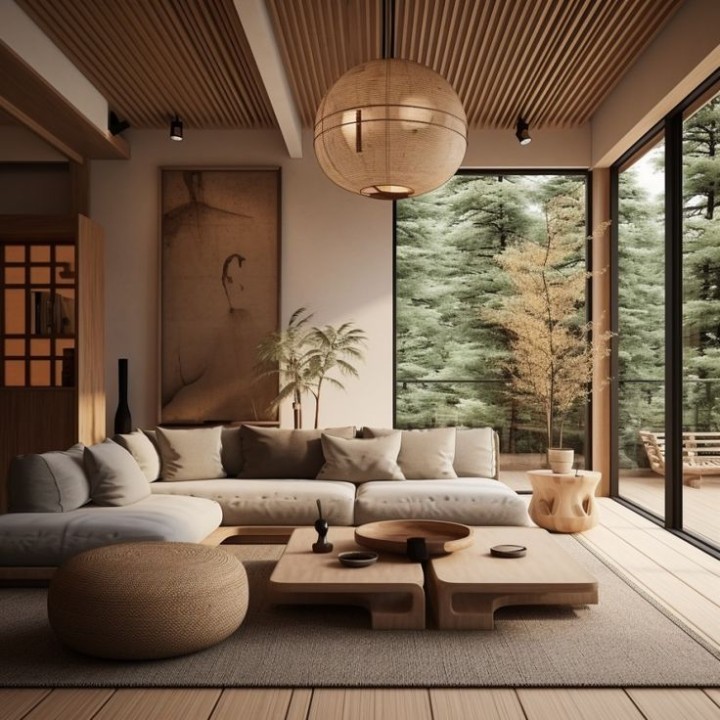As we become more conscious of our environmental footprint and seek simplicity in our lives, home decor trends are shifting towards eco-friendly and minimalist designs. These trends not only reflect a commitment to sustainability but also embrace a clean, uncluttered aesthetic that promotes tranquility and efficiency. Here’s a look at how these trends are shaping modern interior design.
Embracing Eco-Friendly Materials
Sustainable Resources
Eco-friendly home decor focuses on using materials that are sustainable, renewable, and have a minimal environmental impact. Bamboo, reclaimed wood, and recycled metals are popular choices. These materials are not only environmentally friendly but also bring a unique, natural beauty to your home. For example, bamboo furniture is durable and grows rapidly, making it a highly renewable resource.
Organic Textiles
Textiles play a significant role in home decor, and organic fabrics are gaining traction. Cotton, linen, and wool that are certified organic are produced without harmful chemicals and pesticides. Additionally, there are innovative materials like recycled polyester and hemp that are eco-friendly and stylish. Opting for these textiles can enhance the comfort and sustainability of your living space.
Minimalist Design Principles
Clean Lines and Simple Forms
Minimalism is characterized by its simplicity and functionality. Furniture and decor items feature clean lines, simple shapes, and a lack of ornamentation. This approach not only makes spaces look more spacious but also helps in creating a calming environment. Pieces like a sleek sofa or a geometric coffee table can serve as focal points without overwhelming the room.
Neutral Color Palettes
A minimalist design often incorporates neutral color palettes such as whites, beiges, and grays. These colors create a serene and cohesive look, making it easier to combine different elements without clashing. Adding texture through materials like wool rugs or linen curtains can provide depth while maintaining the minimalist aesthetic.
Decluttered Spaces
One of the core tenets of minimalism is decluttering. By reducing the number of items and focusing on essentials, you create a more organized and peaceful living environment. Storage solutions are often built into the design, such as floating shelves or multifunctional furniture, which helps keep spaces tidy and functional.
Integrating Eco-Friendly and Minimalist Designs
Upcycled and Repurposed Items
Combining eco-friendly and minimalist principles can be achieved by incorporating upcycled or repurposed items into your decor. For instance, an old wooden ladder can be transformed into a stylish bookshelf, or vintage furniture can be restored to serve a new purpose. This approach not only reduces waste but also adds character and uniqueness to your home.
Energy-Efficient Lighting
Lighting is a crucial element in home decor, and energy-efficient options such as LED lights or solar-powered fixtures align with both eco-friendly and minimalist ideals. These lighting solutions reduce energy consumption and come in sleek, modern designs that complement a minimalist interior.
Indoor Plants
Indoor plants are a simple way to enhance the eco-friendly aspect of your home while adding a touch of nature to your decor. Plants like snake plants, succulents, and pothos are low-maintenance and improve indoor air quality. They fit seamlessly into a minimalist design and provide a refreshing, natural element to your space.
Benefits of Eco-Friendly and Minimalist Designs
Environmental Impact
Adopting eco-friendly and minimalist design principles helps reduce your environmental footprint. Sustainable materials and practices contribute to a healthier planet, while minimalist living reduces the demand for excess products and promotes responsible consumption.
Mental Well-Being
A minimalist design can significantly impact your mental well-being. The clean and uncluttered environment promotes relaxation and reduces stress. Coupled with eco-friendly elements, it creates a harmonious living space that supports a balanced lifestyle.
Longevity and Quality
Eco-friendly materials and minimalist designs often prioritize quality over quantity. Investing in well-made, sustainable products ensures that your decor will last longer and remain timeless, reducing the need for frequent replacements and minimizing waste.
Conclusion
The fusion of eco-friendly and minimalist designs in home decor is more than just a trend; it represents a shift towards a more conscious and intentional way of living. By embracing sustainable materials, simple forms, and decluttered spaces, you can create a home that is not only aesthetically pleasing but also aligned with your values. As these trends continue to evolve, they offer a refreshing approach to interior design that promotes both environmental responsibility and personal well-being.
Join the 3K Club for exclusive online casino thrills and big wins!









Leave a Reply